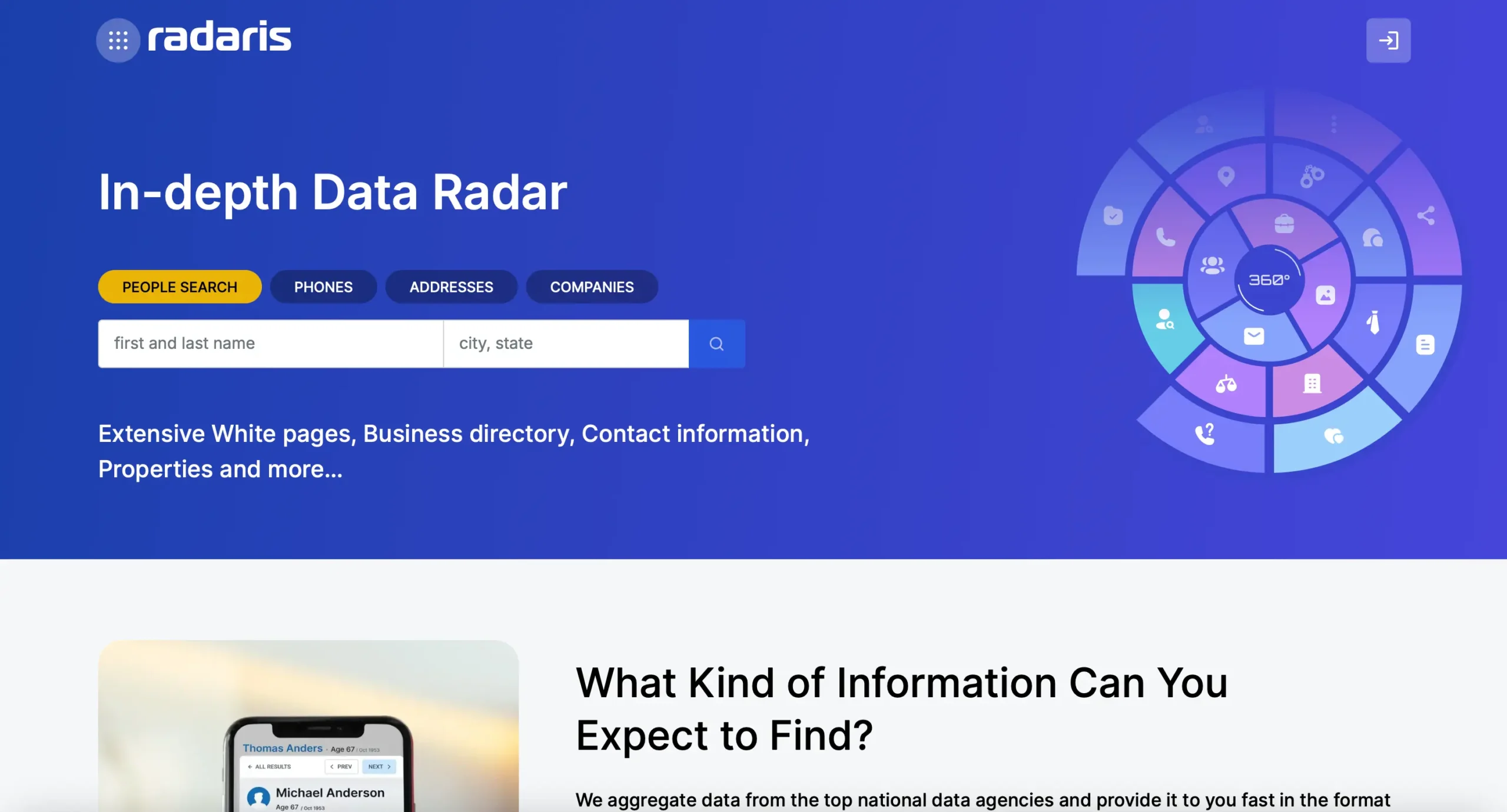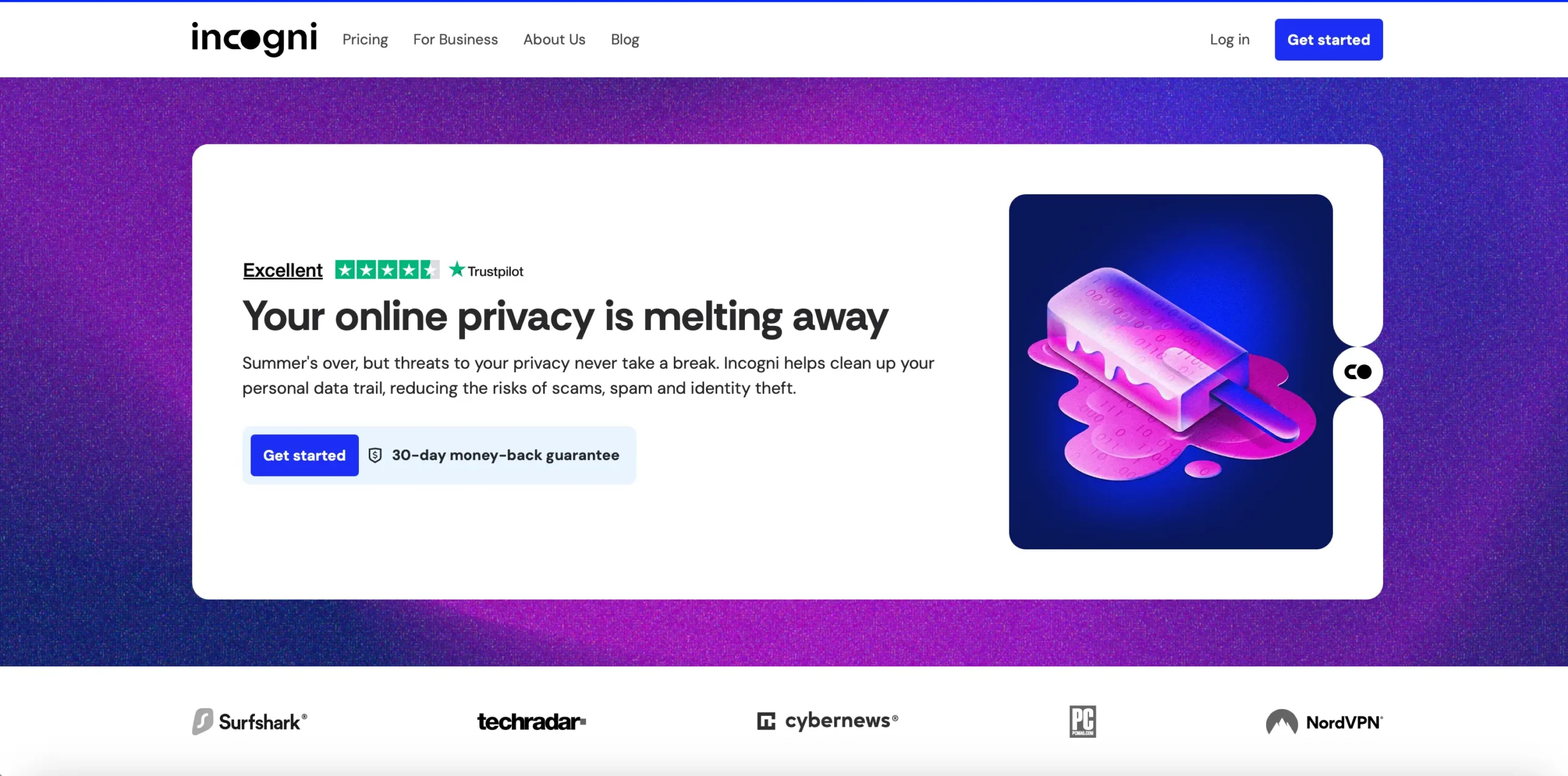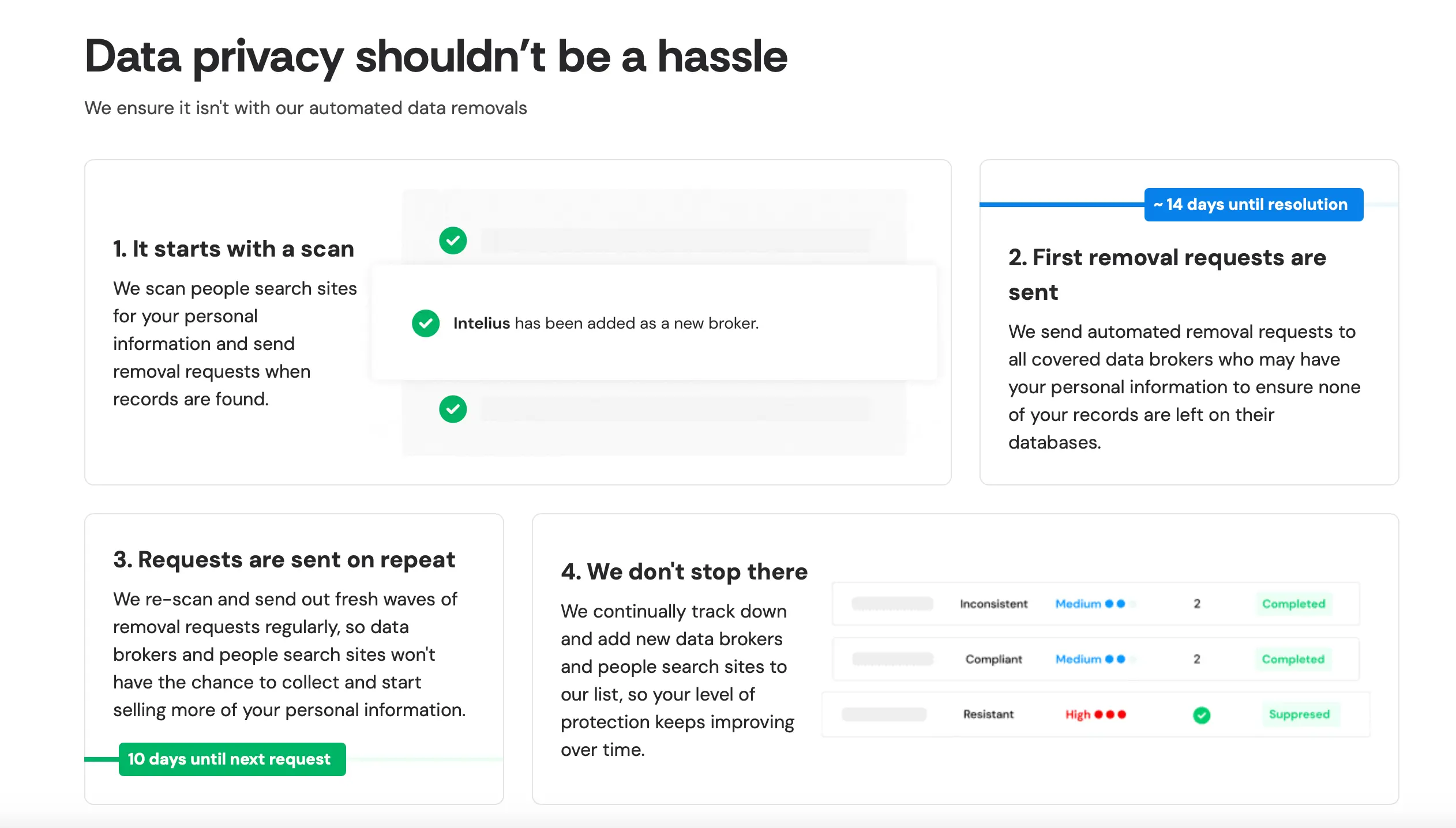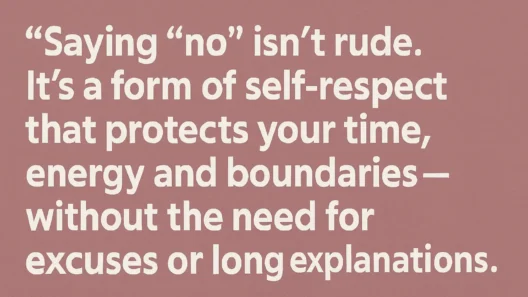Ever typed your own name into Google and suddenly discovered a website you never signed up for, displaying way more information than you’d like? That’s how most people stumble upon Radaris. At first, it just looks like another people-search site, but the further you scroll, the more you realize—your address, phone numbers, even family connections and old workplaces are there for anyone to find.
Not only that, but Radaris (and dozens of similar sites) will even sell this data to whoever wants it.

Here’s the kicker: this isn’t just uncomfortable—it’s actually risky. In a world where information is currency, your personal details are up for grabs to scammers, cyberstalkers, aggressive marketers, and even curious neighbors.
So, what can you actually do about it? Can you really remove yourself from Radaris, and does it even make a difference if your details live on other sites too? This guide covers everything—step by step, with real-world tips, and a personal take on why privacy is worth fighting for.
What Is Radaris, and Why Should You Care?
Radaris is one of the largest data broker and “people search” sites in the US. They collect, organize, and publish information about millions of people—often without asking, and sometimes without you ever knowing.
We’re talking addresses (both current and old), phone numbers, possible relatives, work history, age, and in some cases, even court records or social media activity. That’s a goldmine for anyone who wants to look you up.
Why is this a problem?
- Anyone can find (and sometimes buy) your details in seconds.
- Your info can be used for phishing, scams, identity theft, or targeted harassment (aka doxxing).
- Employers, insurance companies, and even random strangers might use this info to judge you—or contact your family.
- Old or inaccurate data can keep showing up, causing confusion or even legal/financial trouble.
- Sensitive info (like court cases or bankruptcies) can follow you around for years.
How Did Your Data End Up on Radaris?
You might wonder, “Did I ever sign up for this?” The answer is almost always no—Radaris scrapes public records, business registries, social media, online forms, old directories, and even leaked databases.
Sometimes, just entering your email or phone number on a random site years ago can be enough to start the data trail. The worst part? They’re constantly refreshing their records, so new info keeps popping up, even if you moved or changed jobs.
Is Opting Out Really Worth It?
Short answer: Absolutely, yes. Even though the US (and many other countries) don’t have a single, sweeping privacy law that forces data brokers like Radaris to erase your data everywhere, most of these sites do offer some kind of “opt out” process. Why? Because public pressure and new privacy laws in states like California are forcing their hand.
But let’s be real—it’s often a pain. Each site has a different (sometimes tricky) process, and it’s never fully “one and done.” Still, removing yourself from Radaris is one of the most effective first steps to regaining control over your personal info online. And the earlier you do it, the better.
The Real-Life Risks: Why I Decided to Take Action
To be honest, I used to ignore these sites. I figured, “Who’d be interested in my boring life anyway?” That changed the day I started getting scam texts and weird emails mentioning details nobody should know.
Turns out, my info was floating around on Radaris and other people search sites for anyone with five minutes and a Wi-Fi connection to find.
Since then, I’ve helped friends and family clean up their digital footprints—and seen first-hand how quickly data can be misused. The truth? It’s not a question of if someone will abuse your info, but when. And you don’t want to wait for that day.
How to Opt Out of Radaris: The Real, Step-by-Step Guide
Here’s the honest truth: Radaris doesn’t make the opt-out process super obvious, but if you follow these steps, you can get your info hidden or removed. I’ve broken down the process below—if you follow along, you’ll be a lot more private by the end of the day.
Step 1: Go to the Radaris Website
Start by opening https://radaris.com/. On the main page, look for a link or button labeled “Control Your Info”. This is their official starting point for privacy requests.
Step 2: Begin the Opt-Out Process
Radaris will walk you through several intro screens. Just keep clicking “Continue” (usually three times) until you get to the part where you can actually search for your own listing.
Step 3: Search for Your Profile
Type your full name into the search box. If your name is common, you might need to add your city or state to narrow down the results. Once your listing appears, look for a button or link that says “Control Info” next to your profile.
Step 4: Create a Radaris Account
Yes, it’s annoying, but to fully control (and hide) your info, Radaris requires you to sign up for an account. Enter your email, create a password, and go through the usual sign-up steps.
Tip: Use a dedicated “privacy” email for this process—something you don’t use for shopping or banking. (Think ProtonMail, Tutanota, or a burner Gmail account.)
Step 5: Claim and Verify Your Profile
To prove it’s really you, Radaris will ask for your name and a phone number. After you enter your number, they’ll text you a verification code. Type the code into their form to verify.
- Don’t want to give your real number? You can use a VoIP or Google Voice number, as long as you have access to the texts.
Step 6: Make Your Profile Private
Once verified, you’ll see your profile dashboard. There will be an option labeled “Manage Info” or “Make Profile Private”. Click that, and confirm that you want to hide or suppress your profile from public searches.
- Important: “Making your profile private” on Radaris doesn’t technically erase your data from their database—but it does remove it from public view, which is what most people actually care about.
Step 7: Double-Check and Follow Up
Go back to Radaris (using an incognito window) and search for yourself again. If your profile still shows up, try clearing your browser cache, or check back after 24–48 hours. Sometimes it takes a day or two for changes to go live.
- If your listing still appears, contact Radaris support directly and reference your privacy request. Persistence pays off.
Extra Tips: Keeping Your Data Off Radaris (and Similar Sites)
Opting out of Radaris is a great start, but if you want real privacy, you’ll need to go further. Here’s what actually works:
1. Repeat for Other Data Brokers
Radaris is just one player. Sites like Whitepages, Spokeo, BeenVerified, Intelius, PeopleFinder, and TruePeopleSearch have similar opt-out pages—but the process is different on each site.
- Pro tip: Search “[sitename] opt out” for a direct link to their removal page.
- Some sites let you remove info without an account; others require verification just like Radaris.
2. Monitor Your Online Presence Regularly
Set up Google Alerts for your name, or use a free people-search tool every couple of months to see where your info pops up. The web changes fast, and new sites appear all the time.
3. Be Careful With Online Forms
Every time you enter your name, address, or phone number online, you’re potentially handing info to a future data broker. Use “burner” emails and phone numbers when possible, and avoid giving out your main details unless absolutely necessary.
4. Use a Privacy Service (Like Incogni)

If you’re busy or just don’t want to deal with dozens of opt-out forms, there are services that automate this for you. Incogni is one of the easiest (and often recommended for global users):
- You pay an annual fee, and they send out data removal requests to dozens of data brokers, including Radaris.
- Incogni even offers a Family & Friends plan (protect up to 4 people at once), and keeps chasing brokers who re-add your info later.

Pro tip: If you want to try Incogni, look for a 50% discount on the annual plan—they run promos frequently.
Advanced Strategies for Protecting Your Privacy (Beyond Just Radaris)
How Data Brokers Keep Your Info Alive (and Why It’s an Ongoing Battle)
Here’s something most people don’t realize: even after you remove yourself from Radaris, there’s a good chance your data will show up again—either on Radaris itself, or on copycat sites. Why? Because these companies constantly rescan public records, scrape new data, and sometimes even buy lists from each other.
I know it sounds endless. But here’s the good news: the more proactive you are, the less likely you are to have your full profile exposed everywhere. Persistence is your friend.
The Role of Privacy Services: Are They Worth It?
Let’s be real—opting out manually can be time-consuming. There are more than 100 data broker sites in the US alone, each with their own process. If you have the time and energy, you can do it yourself (and save money). But if you’re busy, value your sanity, or want to protect your whole family, privacy services can be a solid investment.
Why Incogni Stands Out
I’ve tested a few, and Incogni is genuinely user-friendly—plus, they’re transparent about who they contact on your behalf. Here’s how it works:
- You sign up (individually or with a Family & Friends plan).
- You add your info (you can enter multiple emails, phone numbers, and addresses to catch old records).
- Incogni identifies which brokers likely have your data and sends opt-out requests automatically.
- They keep following up (because some brokers are stubborn and add your info back).
- You can track progress in a dashboard: how many requests sent, completed, and pending.
Incogni also offers discounted annual plans, which makes it one of the most affordable options for comprehensive privacy.
Other Privacy Tools Worth Using
- VPN (Virtual Private Network): Hides your IP and encrypts your traffic—critical when you’re browsing public WiFi or want to minimize tracking.
- Password Manager: Don’t use the same passwords everywhere. A manager (like 1Password or Bitwarden) keeps you safe from leaks.
- Encrypted Email: Use services like ProtonMail or Tutanota for important stuff—way harder for brokers to connect your accounts.
- Two-Factor Authentication (2FA): Activate it everywhere you can, especially for email and bank logins.
- Credit Freeze/Monitoring: Especially in the US, freezing your credit makes it much harder for anyone to open accounts in your name.
| My 5 Best VPN for Privacy | Offer + Discount | URL |
|---|---|---|
| NordVPN | 77% off + 3 months free | Try NordVPN |
| ExpressVPN | 61% off + 6 months free | Try ExpressVPN |
| SurfShark | 87% off + 2 months free | Try SurfShark |
| CyberGhost | 83% off + 2 months free | Try CyberGhost |
| PIA VPN | 82% off + 2 months free | Try PIA VPN |
What If Your Info Keeps Coming Back?
This happens! Sometimes, it’s because you’ve appeared in new public records (like moving to a new address or registering a business), or the data broker simply scraped it again. Here’s what works:
- Repeat the opt-out process: Annoying, but necessary. Keep a list of where you’ve already opted out.
- Contact support directly: Many sites have a support email for “privacy requests.” Being firm and referencing privacy laws (like the CCPA in California or GDPR in Europe) helps.
- Automate monitoring: Google Alerts for your name, plus regular checks on people search engines, help you catch new listings quickly.
But “I’ve Got Nothing to Hide”—Does It Matter?
Absolutely! Here’s the thing: data brokers don’t care who you are. Everyone’s data is valuable—whether for targeted ads, phishing scams, insurance profiling, or even denying you a loan. The less info about you is out there, the less you can be targeted, manipulated, or scammed.
- Identity Theft: The #1 reason people opt out. Stolen info fuels credit card fraud, tax scams, and more.
- Stalking/Harassment: Ex-partners, angry neighbors, even internet trolls use people search sites to dox or harass.
- Unwanted Ads & Robocalls: Marketers buy these lists, then spam you for years.
- Financial Risks: Loan and insurance companies check data brokers to decide your “risk score”—outdated or incorrect info can actually cost you money.
Who Actually Uses Data from Radaris and Similar Sites?
You might be surprised just how many groups have a stake in your personal info. Here’s where your data often ends up, and why it matters:
1. Marketers & Advertisers
Big brands, small businesses, and shady marketers all love data brokers. They use your details to:
- Build detailed consumer profiles (“this person just moved,” “this person has kids,” “this person might need insurance”).
- Target you with ads—sometimes so precisely it’s a little creepy.
- Resell your info to other advertisers.
2. Financial Institutions
Banks, lenders, and insurance companies sometimes buy info from people search sites to:
- Double-check your identity or address.
- Profile you for credit or risk scoring (sometimes even using outdated info).
- Deny or approve loans and policies, or adjust your rates.
3. Recruiters & Employers
Before offering you a job, some companies quietly check these databases to confirm your work history or look for red flags. That “old job” you left years ago? It might still show up and confuse things.
4. Scammers & Fraudsters
Sadly, the darker side of the internet is full of people looking for easy targets:
- Phishing: They tailor emails or calls with details scraped from Radaris.
- Identity theft: Enough info, and they can open credit cards, file tax returns, or impersonate you.
- Stalking/harassment: Ex-partners, strangers, or trolls can use these details to invade your privacy.
5. Private Investigators & “Curious” Individuals
Sometimes it’s not even professional—just nosy neighbors, acquaintances, or internet sleuths trying to learn more about you.
Privacy Checklist: How to Keep Your Data Off the Grid
Tackling Radaris is just one step. Here’s a realistic, repeatable checklist to protect your privacy across the web:
1. Opt Out of the Big Sites First
- Start with Radaris, Whitepages, Spokeo, BeenVerified, and Intelius.
- Use each site’s official opt-out form (some require email/phone verification).
2. Automate with a Service
- Try Incogni or DeleteMe to handle the heavy lifting—especially if you value your time or want family coverage.
3. Clean Up Your Digital Footprint
- Remove old social media profiles you don’t use.
- Delete or make private any accounts on forums or hobby sites.
- Use search engines to check for your info every couple of months.
4. Use Privacy Tools
- VPN for browsing and public WiFi
- Encrypted email for important signups
- Password manager for unique logins
- Enable two-factor authentication everywhere
5. Stay Proactive
- Set up Google Alerts for your name (and family members’ names).
- Freeze your credit if you’re in the US (it’s free and prevents new accounts from being opened).
- Don’t share your main phone number or address on forms unless absolutely necessary.
Sample Opt-Out Email Template
Sometimes a site doesn’t have a clear form, or you want to follow up. Here’s a template you can use:
Subject: Request for Removal of Personal Information
Hello,
I am writing to formally request the removal of my personal information from your database and website.
Please remove any and all records associated with my name, address, phone number, and email.
This request is made in accordance with applicable privacy laws (CCPA/GDPR/etc.).
Thank you for your prompt attention to this matter.
Sincerely,
[Your Name]
[Details as they appear on the site—name, city, etc.]
Always double-check what personal details you include, and never send sensitive data unless you trust the process or it’s required for verification.
Final Thoughts: Take Control of Your Digital Life
Living in the age of data doesn’t mean you have to give up all control. Opting out of Radaris and similar sites is one of the most effective ways to protect yourself against scams, spam, and privacy invasions. Even if you can’t wipe your info off the internet completely, every step you take makes you a harder target—and sends a message that your data is not for sale.
Most importantly, don’t let the scale of the problem stop you from taking action. Do a little at a time. Use the tools that make your life easier. And remember, your privacy is worth protecting—now more than ever.
FAQ: Common Questions About Radaris Opt Out
How long does it take for Radaris to remove my profile?
Usually within a few days, but sometimes up to two weeks. Always follow up if it takes longer.
Do I need to provide real info to opt out?
Yes, you need to verify your identity—but use a privacy-focused email and (if possible) a VoIP number.
What if my info comes back?
Repeat the process, monitor your name, and consider using a service to automate future removals.
Is this just a US problem?
Data brokers are most active in the US, but similar sites exist globally (UK, Australia, Canada, etc.). The process is similar, but check your local privacy laws for extra rights.














